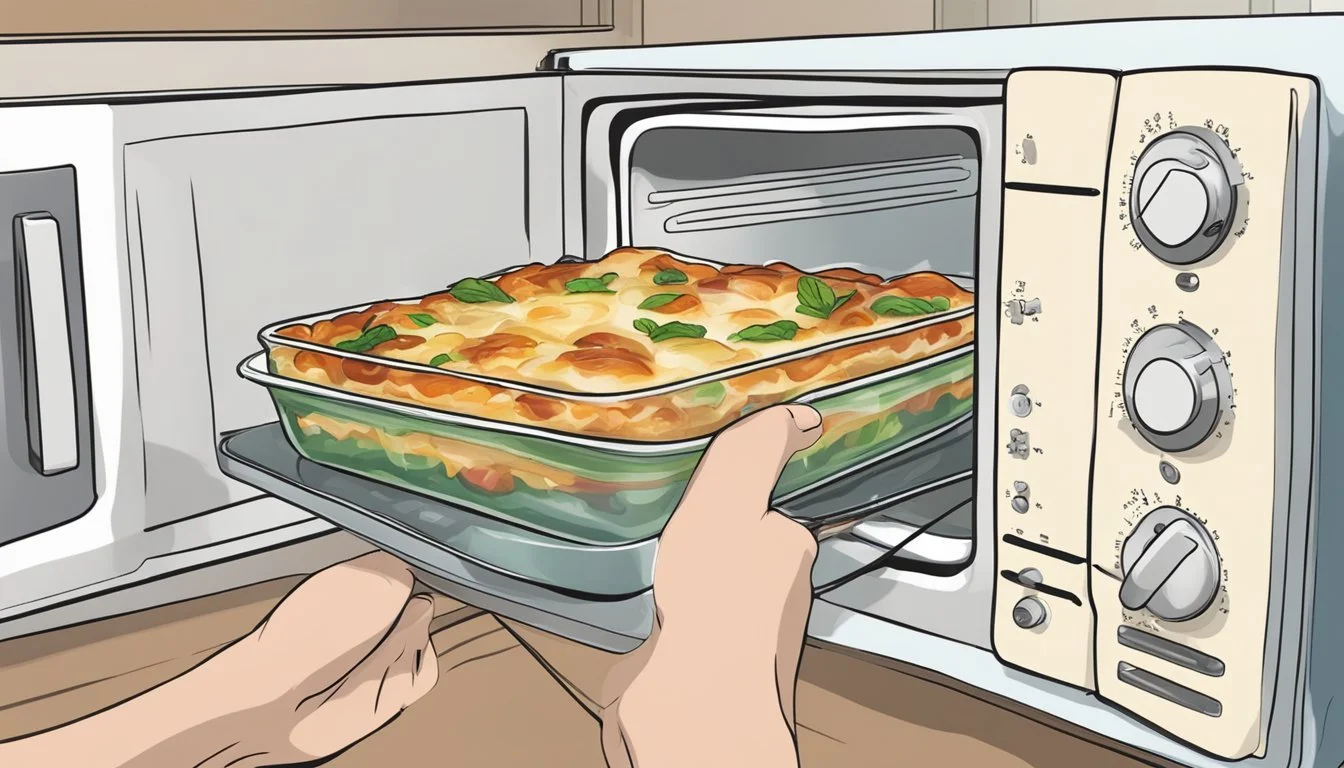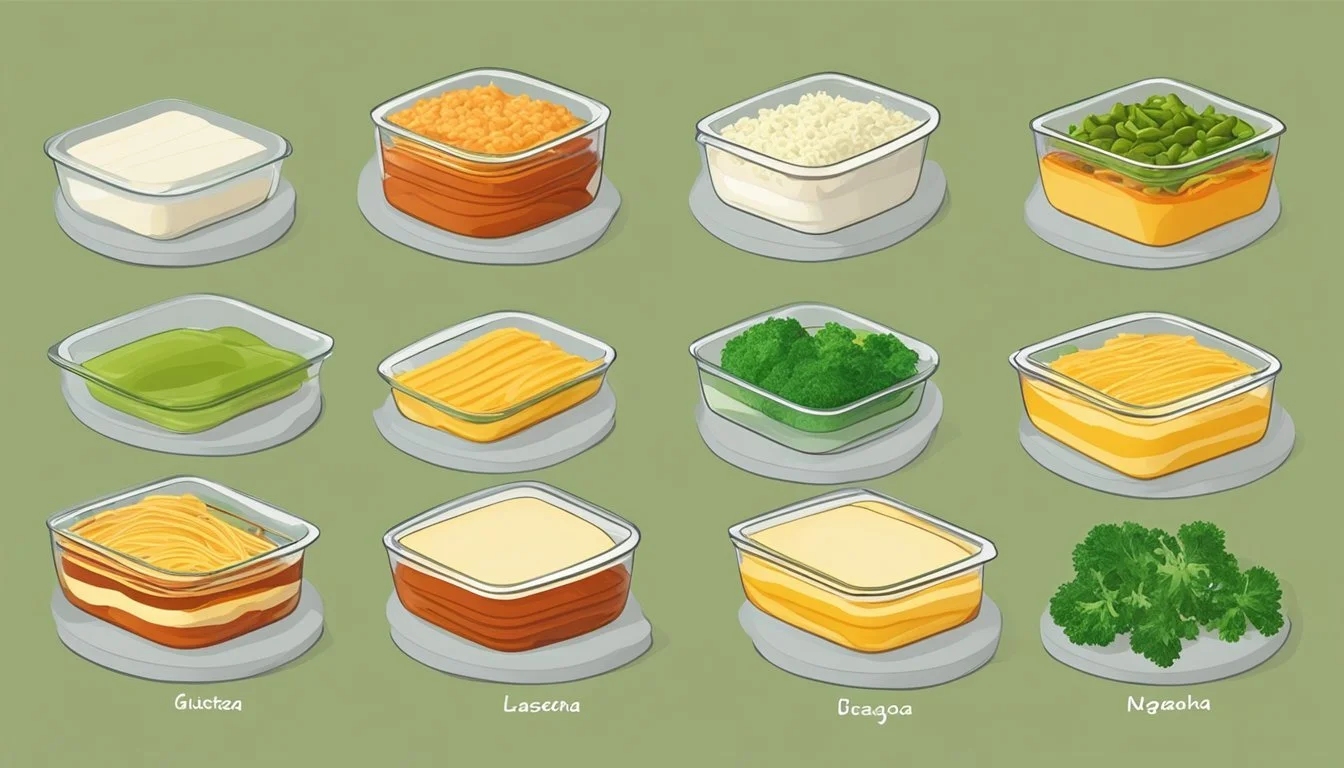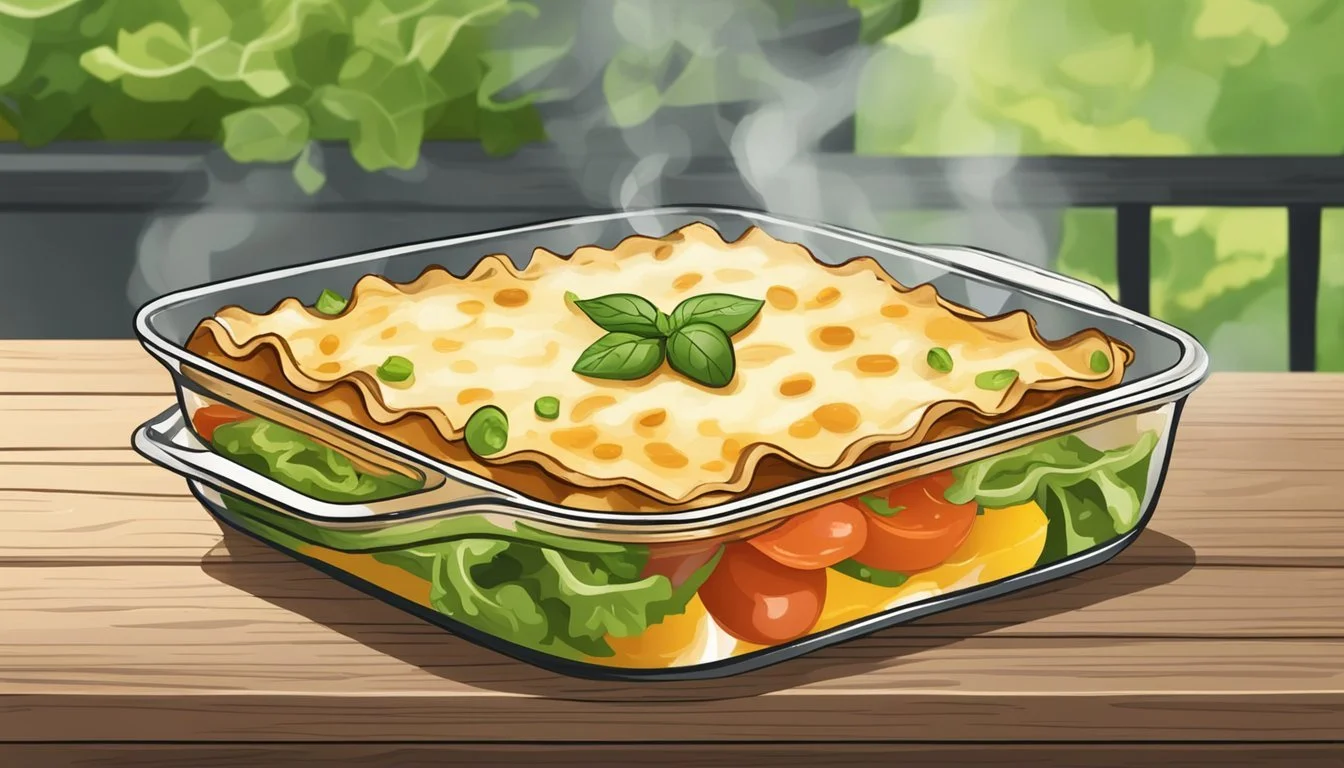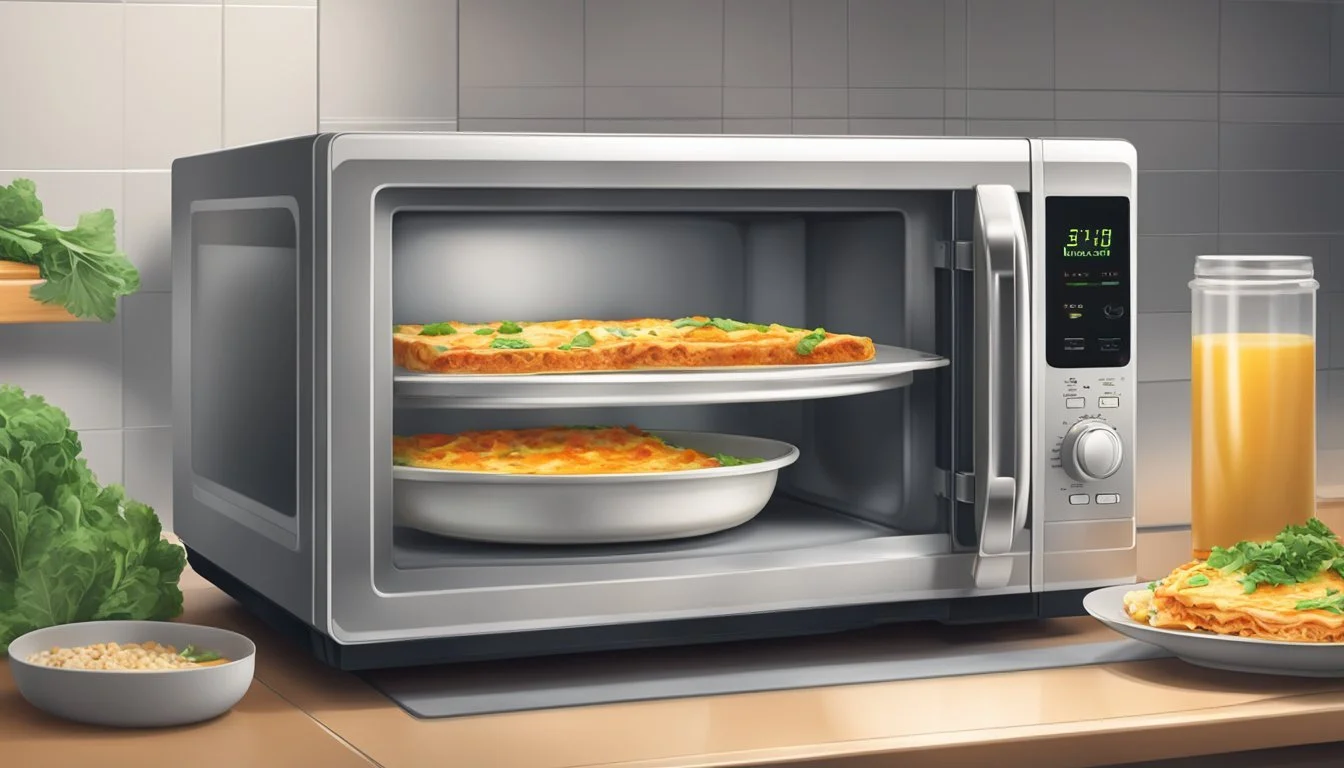How to Reheat Gluten-Free Lasagna (Vegetable) for Perfect Taste
Reheating gluten-free vegetable lasagna can be a bit tricky, especially for those adhering to a gluten-free diet due to celiac disease or personal preference. To ensure your gluten-free lasagna maintains its flavor and texture, it’s essential to follow specific reheating methods that keep it moist and delicious. Whether using the oven, microwave, or stovetop, understanding how to properly reheat these layers of vegetables and pasta will make a significant difference.
Gluten-free lasagna requires particular care when reheating because gluten-free pasta can often become dry or mushy if not handled correctly. Using a moderate heat and adding a bit of moisture can prevent the lasagna from drying out. Techniques such as covering the dish or adding a small amount of water can help retain the moisture, ensuring that each bite is as satisfying as when it was freshly baked.
For those who enjoy a bit of crispiness, removing the lid during the last few minutes of reheating can offer that perfect texture, while ensuring the vegetable filling stays tender and flavorful. By following these tips, you can enjoy reheated gluten-free vegetable lasagna that tastes just as good as it did on day one.
Understanding Gluten-Free Lasagna
Gluten-free lasagna makes use of specialized ingredients to cater to those with gluten sensitivities or celiac disease. Vegetable lasagna, specifically, provides not just a gluten-free option but a nutritious, vegetarian meal.
The Basics of Gluten-Free Ingredients
Gluten-free lasagna typically uses gluten-free pasta made from rice, corn, or other alternatives like quinoa or chickpeas. Brown rice pasta is a popular choice due to its texture and flavor.
For those making vegetable lasagna, ingredients such as zucchini, squash, and mushrooms can replace or complement traditional lasagna noodles. Ricotta cheese, mozzarella, and marinara sauce remain mainstays, but it's crucial to check that these are labeled gluten-free, as cross-contamination can occur.
Health Benefits of Vegetable Lasagna
Vegetable lasagna offers several health benefits. It's rich in essential vitamins and minerals due to the variety of vegetables used. Zucchini and squash are low in calories and high in fiber, promoting healthy digestion.
Using vegetables instead of meat reduces the overall calorie and fat content of the dish while still providing sufficient protein through cheese. For a vegan option, replace the cheese with dairy-free alternatives and ensure the pasta used is free from animal products. This variation helps cater to vegans, offering an inclusive, nutritious meal.
Preparation Tips Before Reheating
Below are essential preparation tips to ensure your gluten-free vegetable lasagna is reheated perfectly. Proper storage and careful thawing are key to maintaining flavor and texture.
Proper Storage Methods
Storing leftovers correctly is crucial to maintaining their quality. For short-term storage, place the lasagna in an airtight container and refrigerate it promptly. Ensure that the lasagna is cooled to room temperature before sealing it in the container to prevent moisture buildup and potential spoilage.
If you need to store the lasagna for a longer time, consider freezing it. Cut the lasagna into portions and wrap each piece tightly in plastic wrap or aluminum foil. Then, place the wrapped portions in an airtight container or freezer bag. This method not only preserves the lasagna's texture but also reduces prep time when reheating.
Pre-Reheat Thawing Practices
Before reheating, it's important to thaw the lasagna properly, especially if it was stored in the freezer. The safest method is to transfer the frozen lasagna from the freezer to the fridge 24 hours before you plan to reheat it. This allows it to defrost evenly and safely.
If you are short on time, you can use the defrost setting on your microwave. Place the lasagna on a microwave-safe plate and use short intervals to avoid cooking unevenly. Never thaw lasagna at room temperature, as this can lead to unsafe food handling practices and the growth of bacteria. For the best results, ensure that the lasagna is adequately thawed to reduce reheating time and guarantee even heating.
Reheating Techniques
When it comes to reheating gluten-free vegetable lasagna, achieving the right balance of moisture and flavor preservation is key. Here are three effective methods to ensure your lasagna remains delicious and evenly heated.
Oven Method
Prep and Total Time: 35-45 minutes
Servings: Varies based on initial preparation
Preheat the oven to 350°F (175°C). Place the lasagna in an oven-safe casserole dish or baking dish. Add a few tablespoons of water or extra sauce on top to retain moisture. Cover the dish tightly with aluminum foil to prevent drying out.
Bake for 30-45 minutes, depending on whether the lasagna is refrigerated or frozen. For a crispier top, uncover in the last 5 minutes of cooking time. This method ensures even heating and flavor preservation, making it ideal for a whole dish or multiple servings.
Microwave Method
Prep and Total Time: Approximately 10 minutes
Servings: One serving at a time
Place a single serving of lasagna on a microwave-safe plate. To avoid drying out, cover the lasagna with a damp paper towel or a microwave-safe lid. Reheat at 50% power for 2-3 minutes, then increase to full power for 1-2 minutes until heated through.
Check the lasagna periodically to ensure even heating. This method is quick and convenient but may result in less even heating compared to the oven method. However, it’s perfect for reheating individual slices when you're short on time.
Stovetop Technique
Prep and Total Time: 20-25 minutes
Servings: One or two servings at a time
For this method, place a slice of lasagna in a non-stick skillet over medium-low heat. Add a few tablespoons of water or sauce to the skillet for moisture retention. Cover the skillet with a lid to trap steam and heat evenly.
Cook for about 20 minutes, shaking the pan occasionally to prevent sticking. Remove the lid for the last 5 minutes to crisp the bottom layer. This method ensures the lasagna remains moist and flavorful, providing a slightly crispy texture which enhances the overall experience.
Layer Ingredients Profile
Creating a balanced and flavorful gluten-free vegetable lasagna requires thoughtful layering of various ingredients. Each layer, from the cheeses to the vegetables and herbs, contributes to a rich and satisfying dish.
Cheeses and Substitutes
Using a combination of ricotta and mozzarella cheese provides a creamy and stretchy texture. For a vegan option, consider vegan ricotta and plant-based cheese.
Cheeses and Substitutes (For a 9x13" pan):
Ricotta: 2 cups
Mozzarella: 2 cups shredded
Vegan Ricotta: 2 cups (if needed)
Plant-based cheese: 2 cups shredded
Mix the ricotta with a bit of salt, pepper, and optionally an egg for structure. Layer this mixture between the lasagna sheets along with shredded mozzarella or its vegan counterpart.
Vegetable Varieties
Zucchini, eggplant, and spinach are excellent choices for a gluten-free lasagna as they add different textures and moisture. Roasted vegetables like bell peppers and tomato sauce enhance the flavor profile.
Suggested Vegetables:
Zucchini: 2 medium, thinly sliced
Eggplant: 1 large, thinly sliced
Spinach: 4 cups, fresh or 2 cups frozen, thawed and drained
Bell Peppers: 2, roasted and sliced
Thinly slice zucchini and eggplant to layer between the lasagna sheets. Sauté mushrooms, onions, and garlic together until softened and add them to each layer for depth.
Herbs and Seasonings
Basil, oregano, and Italian seasoning are essential for an authentic taste.
Key Seasonings:
Basil: 2 tbsp fresh or 1 tbsp dried
Italian Seasoning: 1-2 tbsp
Oregano: 1 tsp dried or 1 tbsp fresh
Sprinkle fresh herbs like basil and oregano between layers to enhance the freshness. For additional depth, use dried Italian seasoning mixed into the cheese or vegetable layers.
Proper seasoning ensures each bite is packed with flavor, making the dish more complex and enjoyable.
Finishing Touches for Enhanced Flavor
After reheating gluten-free vegetable lasagna, adding fresh ingredients and choosing the right condiments can elevate its taste. These finishing touches ensure each serving is as delightful as the original meal.
Adding Fresh Ingredients After Reheating
Incorporating fresh ingredients enhances both flavor and presentation. A sprinkle of fresh basil can introduce a burst of herbaceous aroma. Fresh spinach added right before serving adds a nutritious and vibrant element.
Drizzling extra virgin olive oil on top lends a rich, fruity note. For a cheesy touch, sprinkling vegan parmesan cheese gives a similar effect without compromising the gluten-free nature of the dish. These finishes ensure the reheated lasagna tastes fresh and inviting.
Choosing the Right Condiments
Pairing the lasagna with the right condiments can significantly improve its flavor profile. Marinara sauce served on the side can add moisture and a tangy note that complements the rich layers. A cheese mixture of different vegan cheeses can also be offered for a customizable, cheesy experience.
Olive oil infused with garlic or herbs can be used as a dip or drizzle, creating a depth of flavor. Garnishing with additional herbs not only enhances appearance but also freshness, making each bite flavorful and satisfying.
Serving Suggestions
When reheating gluten-free vegetable lasagna, consider complementing it with the right side dishes and pairing options. Appropriate portioning and an appealing presentation can also enhance the dining experience.
Accompaniments and Pairings
A well-rounded dinner with gluten-free vegetable lasagna can be achieved with a few careful choices. Salads such as a fresh Caesar salad or a simple mixed greens salad with a vinaigrette dressing provide a fresh, crisp counterpart to the hearty lasagna.
Bread is another excellent option. Opt for gluten-free garlic bread or gluten-free artisan rolls to complement the lasagna. Additionally, a selection of vegetarian side dishes like roasted asparagus or sautéed spinach can round out the meal.
For a touch of sophistication, consider a wine pairing. A light white wine like Pinot Grigio or a light red wine like Pinot Noir pairs well with vegetable lasagna. These choices enhance the flavors without overwhelming the palette.
Portioning and Presentation
Proper portioning and presentation can elevate the dining experience. When serving lasagna, consider individual servings cut from the main dish, ensuring each piece has a balance of layers. Use a sharp knife or a spatula to keep the pieces intact.
Plating techniques can also make a difference. Serve the lasagna on a large, plain white plate to highlight its rich, colorful layers. Add a garnish of fresh basil or parsley for a touch of color.
To complete the plate, consider placing a small serving of salad or a side of roasted vegetables next to the lasagna. This not only looks appealing but also provides a balanced meal suitable for a vegetarian dinner course.
Safety and Dietary Considerations
When reheating gluten-free vegetable lasagna, it's essential to consider various dietary restrictions and health assessments. By understanding the impact of food allergies, sensitivities, and caloric intake, you can ensure a safe and healthy eating experience.
Addressing Food Allergies and Sensitivities
Individuals with celiac disease or gluten sensitivity must be cautious of cross-contamination when reheating gluten-free lasagna. Even small traces of gluten can trigger adverse reactions. Use separate utensils and cookware reserved for gluten-free meals to mitigate this risk.
Dairy allergies are also common. A dairy-free version of the lasagna should be made with alternatives like almond or soy cheese. Always check labels for hidden dairy ingredients.
A table illustrating potential allergens:
Ingredient Possible Allergen Lasagna noodles Gluten (if not GF) Cheese Dairy Sauces Gluten/Dairy
These precautions help maintain the safety of individuals with food allergies and sensitivities, ensuring a pleasant dining experience.
Caloric Intake and Health Assessments
Caloric intake is crucial for a balanced diet. Reheated gluten-free vegetable lasagna can be part of a healthy meal plan, but portion control is key.
A typical serving of vegetable lasagna may contain around 300-400 calories, depending on the ingredients. Opt for low-calorie vegetables and leaner cheese alternatives to reduce the calorie count. Check nutritional labels and adjust your portion size accordingly.
For those with specific dietary restrictions, such as low-carb or low-sodium diets, modifying the recipe by reducing high-carb noodles or using low-sodium sauces is advisable. These adjustments ensure the dish aligns better with individual health goals without compromising flavor.
Promotion and Social Sharing
Promoting your gluten-free vegetable lasagna recipe effectively can drive significant traffic and engagement, especially through social media. Utilizing high-quality photography and strategic social media sharing can maximize your reach.
Leveraging Social Media Platforms
Social media is essential for promoting recipes. Instagram is perfect for sharing visually appealing photos and short video clips through posts and Stories. Use relevant hashtags like #GlutenFreeLasagna and tag popular gluten-free or foodie accounts to increase visibility.
Pinterest is another powerful platform. Create eye-catching pins with appealing photos and clear text overlays. Link directly to your recipe and join relevant group boards to extend your reach. Ensure each pin description is keyword-rich.
Facebook provides a platform to share recipes in various groups, like gluten-free or vegetarian communities. Posting in these groups allows direct engagement with people interested in your content. Use Facebook's scheduling tools to post at peak times when your audience is most active.
Photography Tips for Food Bloggers
High-quality photography is crucial in attracting attention to your food blog. Use natural light to make your gluten-free vegetable lasagna look appealing. Avoid harsh artificial lighting. Place your dish near a window for soft, diffused light.
Food styling can make a big difference. Garnish the lasagna with fresh herbs for a pop of color. Use props like rustic plates, napkins, and utensils to add interest to the composition. Experiment with different angles, such as overhead shots or close-ups, to highlight textures and details.
Editing is the final touch. Use tools like Adobe Lightroom to adjust brightness, contrast, and color balance to make the lasagna look its best. Consistent, high-quality photos will help build your brand and encourage social media engagement.








